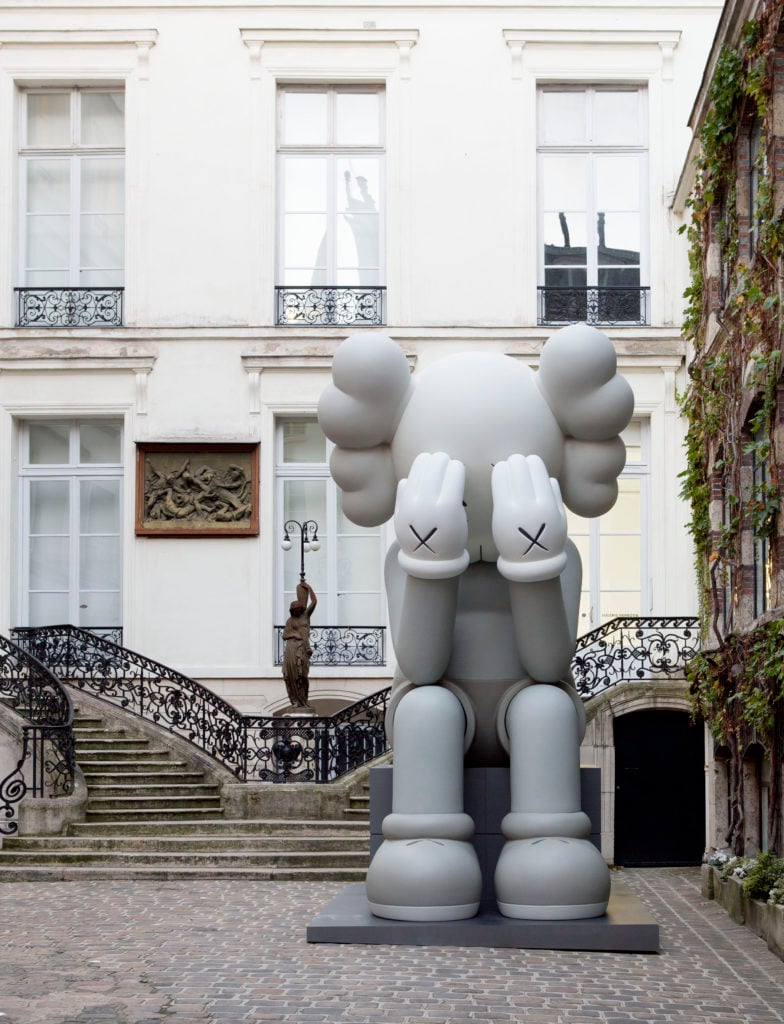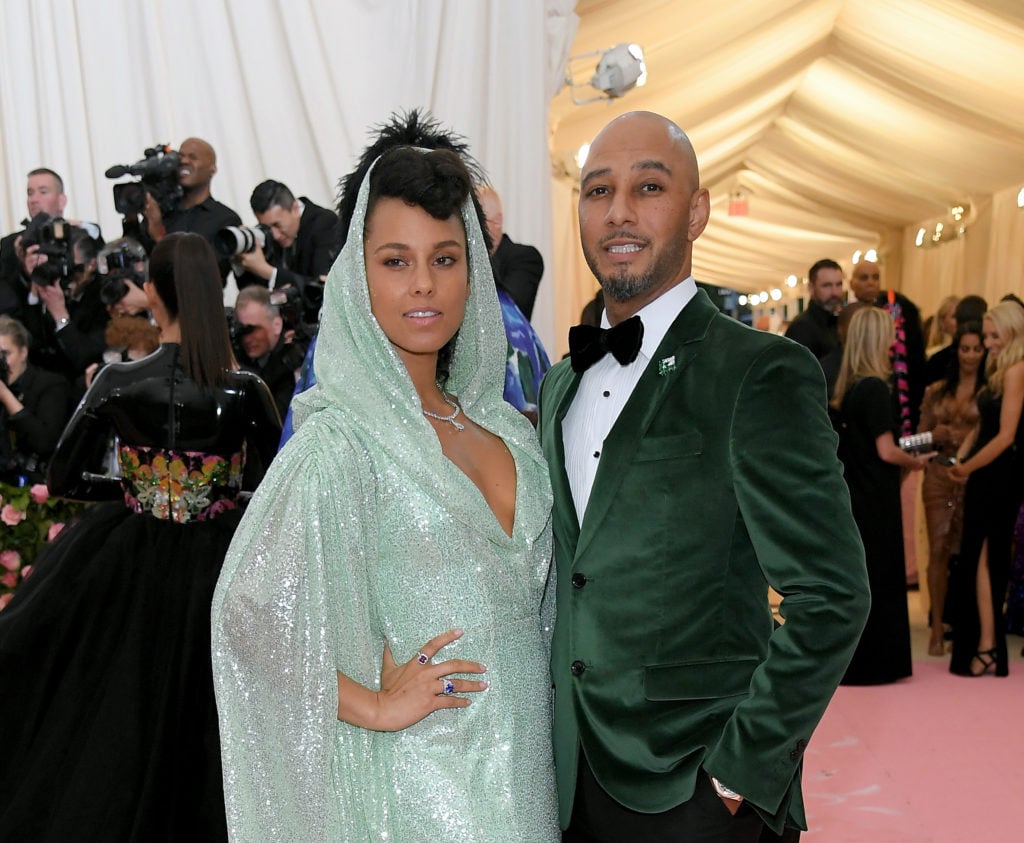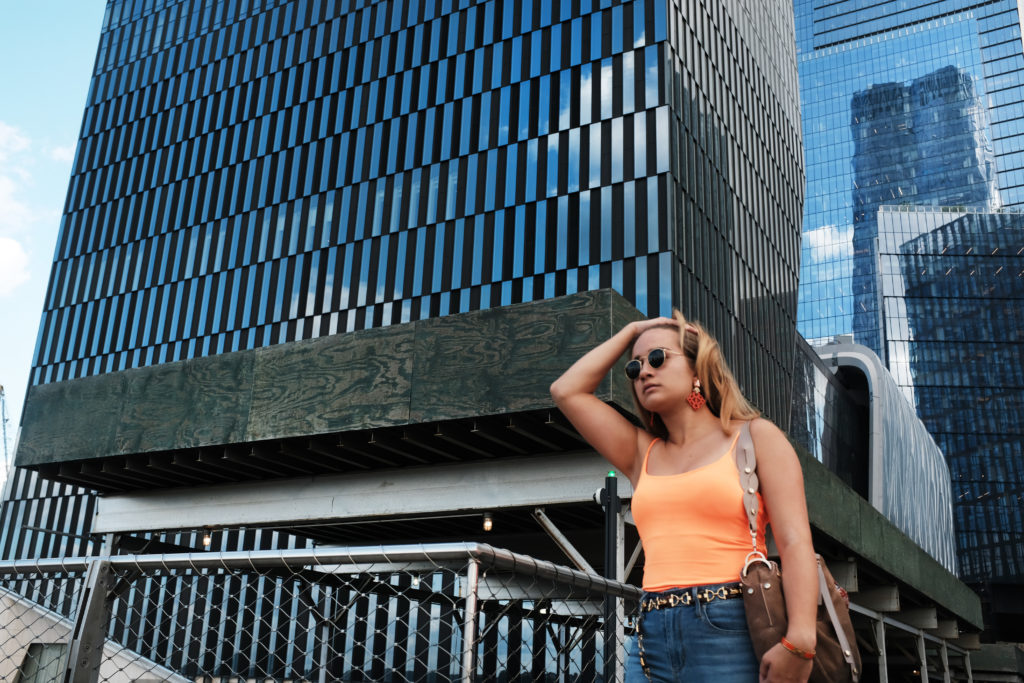Opinion
The Gray Market: 10 Daring and Highly Specific Predictions for the Art Industry in 2021 (and Other Insights)
Fresh off a chaotic 2020, our columnist boldly attempts to chart the ever-turning art world’s orbit in the new year.

Fresh off a chaotic 2020, our columnist boldly attempts to chart the ever-turning art world’s orbit in the new year.

Tim Schneider

Every Monday morning, Artnet News brings you The Gray Market. The column decodes important stories from the previous week—and offers unparalleled insight into the inner workings of the art industry in the process.
Having just white-knuckled it through the most unpredictable year in living memory, a lot of pundits might be inclined to dial back their prognostications for what lies ahead in the next one.
However, I’ve spent the past nine months shrinking my personal life to the size and shape of a cloth face mask. If I were to start constricting myself in this column, too, there’s a risk I could slip helplessly into a crack between the floorboards like some character in a children’s storybook.
That’s why I’m blasting out of the patented Gray Market Writing Bunker™ with the most predictions I’ve ever made in this annual exercise. What’s life without contrast, right?
Longtime readers know how I get down by now, but for the uninitiated: every prediction below is written so that it can be objectively judged true or false come December. As always, I’ll use my last column of the year to evaluate how my would-be powers of foresight panned out. (You can find the review of my 2020 predictions here.)
OK, let’s set our initial coordinates to the most obvious place and fire up the time machine!
If you’re keeping score, this means the only two major fairs I’m caveating are Art Basel in Basel (scheduled to jump off June 14) and Frieze London/Masters (scheduled to launch October 13).
Why those two exceptions? Switzerland lived up to its reputation in 2020 by being among the most exacting, buttoned-up countries in the world when it came to regulating in-person events during the crisis. Factor in the challenges we’re already seeing with vaccine distribution and health-related international travel restrictions, and I could see government officials potentially forcing Art Basel to delay its flagship event a bit.
Meanwhile, Frieze London should have benefited from the UK’s first-mover advantage on vaccinations, but the medical outcomes are now highly questionable based on officials’ bizarre decision to defy all medical guidance and treat structurally different two-dose inoculations from rival manufacturers as interchangeable. Even if that dice roll somehow pays off, Frieze London lands close to the stretch of the calendar when transmission rates started to rise again last fall. An abundance of caution could potentially compel Frieze officials to shift the fair from its traditional format in Regent’s Park to the same distributed model that will power Frieze Los Angeles 2021.
Favorable timing, geography, and/or venue modifications already made will enable the other five fairs above to steam ahead as currently constituted.
According to the pros at the Artnet Price Database, the quantity of fine-art lots sold hit its peak in 2011, when 367,414 works changed hands under the hammer. In 2019 (AKA the last “normal” year), fewer than 310,000 sold—and even that annual total was the highest since 2014.
So this is a big swing on my part. However…
Despite last year’s V-shaped recovery for Wall Street and optimism about an imminent return to economic normalcy, I still see very few collectors being interested in selling off their best works next year—unless the IRS, a divorce attorney, or the grim reaper forces it. That will largely keep the auction houses pinned to a “quantity over quality” strategy.
Emboldened by encouraging results in their online sales and hybrid auction formats in 2020’s second half, the houses will also have incentive to move even further away from their pre-lockdown calendars by heartily pumping up the number and types of public sales they stage.
Combine those factors with buyers poised to spend freely (but not recklessly) after a year where they scaled-back on luxuries, and I think the most fine artworks ever will sell at auction. Just don’t expect many trophies to be part of the pack.
Will this be a sobering but-all-too-foreseeable reality check about the state of the market in 2021, or just a mischievous but overzealous troll of my readers? Find out in 12 months!

The KAWS show “Imaginary Friends” at Perrotin in Paris in 2012. Courtesy of Perrotin Gallery.
Although coverage behemoth Lloyd’s of London anticipated last May that the c-word could cost insurers a minimum of $100 billion in underwriting losses, that doomsday scenario might have been premature. Insurers were still prevailing against the vast majority of business-interruption claims made as of late last year, according to Insurance Journal.
Still, that hasn’t stopped policyholders from unleashing their attorneys. Through November 23, the University of Pennsylvania Carey Law School found that more than 1,400 lawsuits had been filed against insurance carriers by business-owners hoping to recoup losses they alleged were caused by the pandemic. Plaintiffs ranged from a lone Orlando gynecologist to Major League Baseball, which filed suit in October over billions in revenue vaporized by a shortened season played almost entirely in empty stadiums.
It’s plausible that multiple art-world litigants already plunged into the fray in 2020 and we just don’t know it yet. (Fair organizers are the most obvious candidates, but hardly the only ones.) If not, some are likely to be motivated by new restrictions designed to quell the resurgent virus this winter. Either way, look for this story to hit the press at least a couple of times in the year ahead.
No one being honest with themselves wants to do a Zoom telethon or “Benefit in a Box” again if there’s a viable alternative; we know how to safely hold outdoor events now; a fair number of the people on gala guest lists will have managed to finagle vaccinations by virtue of their age (or wealth and connections); and institutions will need to fundraise even more desperately this year than they did last year. Get those tuxes and evening gowns ready.

Alicia Keys and Swizz Beatz attend the 2019 Met Gala. (Photo by Neilson Barnard/Getty Images)
By my count, nine US public collections consigned works for sale to auction last year: the Museum of Latin American Art in Long Beach, the Palm Springs Art Museum, and seven of the eight highlighted by my colleague Eileen Kinsella here.
The exception in Eileen’s piece is the Baltimore Museum of Art, which withdrew several pieces from Sotheby’s at the last moment after backlash, including the Association of Art Museum Directors’ coy suggestion that proceeding could violate its temporarily rewritten guidelines.
Those crisis-revised policies give member institutions the ability to “use the proceeds from deaccessioned art to pay for expenses associated with the direct care of collections” through April 10, 2022. (The AAMD traditionally only allows its members to sell works for the sake of buying more art.) The guidelines do not, however, green-light the funneling of sales proceeds into a new long-term endowment, particularly one that is not directly related to collection support—a move the BMA intended to make.
The anti-deaccessioning crowd seems to be hoping that Baltimore’s retreat will discourage other art institutions from leveraging the AAMD’s revisions and leaping into the market for survival. I actually think it will do the opposite—because now they know better than ever precisely where the invisible fence stands.
An onslaught of fair and gallery OVRs practically inflicted PTSD on collectors and advisors in 2020. But my sense is that once even limited physical programming re-entered the picture, keeping up a concurrent digital program became an increasingly high-effort/low-reward proposition to dealers with modest resources.
If virtual art fairs continue after their live counterparts return, some of those dealers are going to decide continuously cycling their own online viewing rooms isn’t worth it anymore, particularly if they can still participate in virtual fairs—and the buy side will thank them for it.
Think of it as the institutionalization of the Condo model, made possible by the staggering commercial vacancy rates triggered by mass long-term work from home.
The blueprint has already been drawn by independent organizations like Wallplay in New York. It would make sense for everyone involved if, say, the Art Dealers Association of America or the New Art Dealers Alliance inked a pact to secure some of those attractive empty spaces for its constituents on a short- or medium-term basis.
This is especially true given how many galleries are quietly underwater on their leases because of last year’s shutdown. Once eviction moratoriums lift, a lot of dealers could be poised to transition to a more freeform business plan.

A passerby in front of one of the condo towers at Hudson Yards. (Photo by Spencer Platt/Getty Images)
Across the economy, many consumers (especially those with means) are becoming increasingly intentional about who benefits when they buy products or services. They want to shop local, support Black-owned businesses, ensure the supply chain is ethical and environmentally sustainable—you get the idea. Many entrepreneurs of like minds and backgrounds are also banding together to share resources and raise awareness about who they are and what they stand for.
Although this trend didn’t just blossom into being last year, the challenges of 2020 amplified it to a new visibility and importance, including in the art world.
For example, last summer saw the launch of See in Black, a self-described “collective of Black photographers who invest in, uplift, and build community around Black visibility”; its first initiative was a direct-to-collector sale of prints to benefit social-justice nonprofits. A few months earlier, 60 LA dealers at various levels of the market united into Gallery Association Los Angeles, an expanding local network that will follow up its ongoing online viewing room project with events and resources to champion the city’s gallery scene. Plus, David Zwirner recruited Ebony L. Haynes to steer a new exhibition-focused gallery and curatorial program led by an all-Black staff.
I don’t know who will follow this path next, but I don’t think the road will be a lonely one.
That also sets up a sharp contrast with my final prediction…
What happens when you combine mass layoffs, a keenness to minimize in-person interactions for health reasons, and tech entrepreneurs’ willingness to heavily discount their devices so they can secure potentially lucrative proof of concept in the cultural sector?
The troubling future of 21st-century work makes landfall in a museum lobby near you soon.
Buckle up for another wild year, folks.